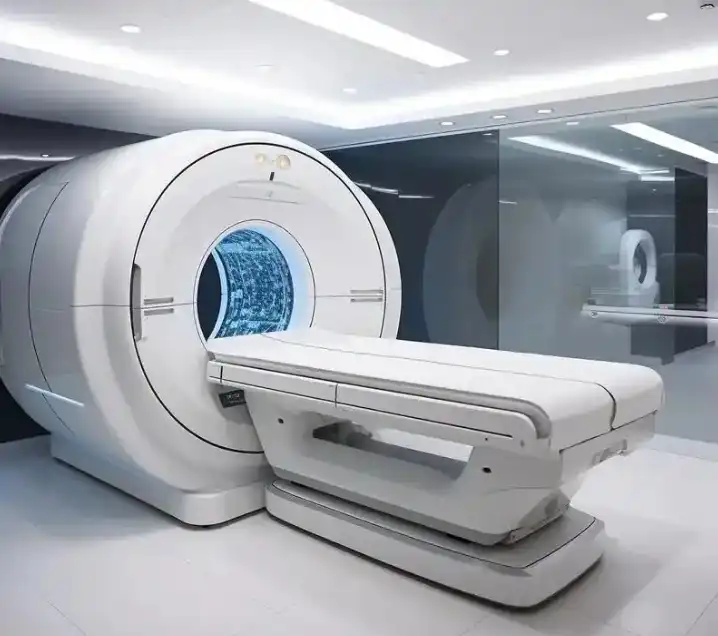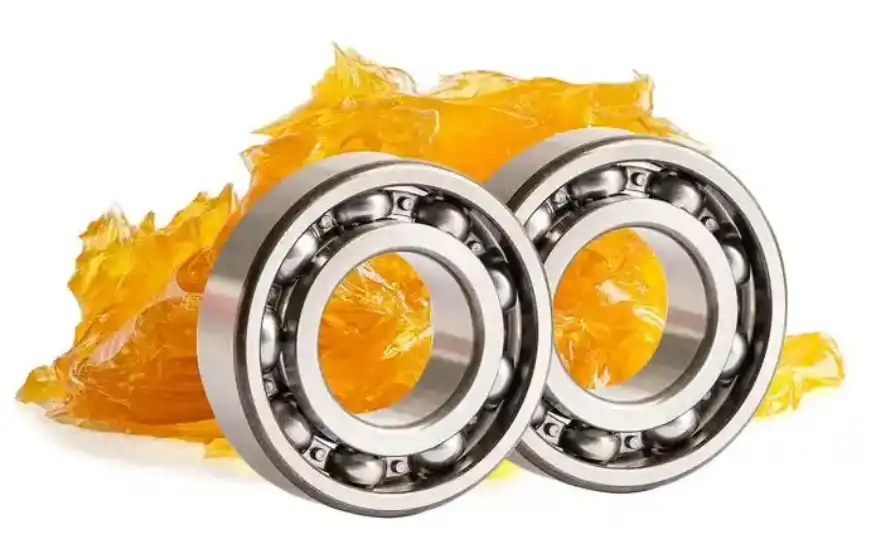How Do Type C Thin Section Bearings Differ from Other Types of Bearings?
Type C thin section bearings represent a specialized category of bearings designed to meet unique engineering challenges where space is at a premium but performance cannot be compromised. These bearings are characterized by their distinctive cross-sectional profile, which maintains a constant radial thickness across all components, setting them apart from conventional bearing designs. Their development has revolutionized various industries, from medical equipment to semiconductor manufacturing, by enabling more compact and efficient machine designs. Unlike traditional bearings, Type C thin section bearings offer exceptional versatility while maintaining superior precision and reliability in applications where space constraints are critical.
What Are the Key Design Features and Applications of Type C Thin Section Bearings?
Type C thin section bearings are engineered with several distinctive characteristics that make them invaluable in specialized applications. The most notable feature is their uniform cross-section, where the inner ring, outer ring, and rolling elements maintain consistent radial thickness. This design philosophy yields several advantages in terms of weight reduction and space optimization. The bearing's architecture typically incorporates precision-ground raceways and superior-grade steel materials, ensuring optimal performance despite their minimal profile.
In medical imaging equipment, these bearings are crucial components in CT scanners and MRI machines, where they facilitate smooth rotational movement while maintaining precise positioning. The semiconductor industry relies heavily on Type C bearings in wafer handling equipment, where clean operation and precise movement are paramount. Robotics applications benefit from their lightweight nature and space-saving design, enabling more compact and agile robotic arms and joints.

The aerospace sector has embraced Type C bearings in satellite systems and space telescopes, where every gram of weight matters. Their ability to maintain stability under varying loads while occupying minimal space makes them ideal for these demanding applications. In precision manufacturing equipment, these bearings enable the creation of more compact machine tools without sacrificing accuracy or load-bearing capacity.

The design of Type C thin section bearings also incorporates advanced sealing solutions to protect against contamination and maintain lubricant integrity. These seals are specifically engineered to minimize friction while providing effective protection, contributing to the bearing's overall efficiency and longevity. The materials used in Type C bearings undergo rigorous heat treatment processes to achieve optimal hardness and wear resistance, ensuring reliable performance even in challenging operating conditions.
How Does the Installation Process of Type C Thin Section Bearings Compare to Standard Bearings?
The installation of Type C thin section bearings requires meticulous attention to detail and specific procedures that differ significantly from standard bearing mounting practices. Due to their thin-walled construction, these bearings demand careful handling during installation to prevent deformation. The mounting process typically begins with thorough cleaning of the mounting surfaces and verification of dimensional accuracy of both the bearing and the housing.
Engineers must pay particular attention to the mounting surfaces' perpendicularity and concentricity, as any misalignment can significantly impact the bearing's performance and lifespan. Temperature control during installation is crucial, as these bearings are more susceptible to thermal expansion effects due to their thin walls. Many installations utilize specialized mounting tools and fixtures designed specifically for thin section bearings to ensure proper seating and alignment.

The mounting procedure often involves precise torque specifications for mounting bolts and careful measurement of internal clearances after installation. Unlike standard bearings, Type C thin section bearings may require custom-designed housing arrangements to accommodate their unique profile while providing adequate support. The installation process must also account for potential deflection under load, which can be more pronounced in thin section bearings compared to conventional designs.
Furthermore, proper handling during installation requires specialized training and expertise. Technicians must understand the unique characteristics of Type C bearings and follow manufacturer-specific guidelines for mounting procedures. The use of appropriate measuring tools and gauges is essential to verify correct installation parameters and ensure optimal bearing performance. Environmental conditions during installation, such as temperature and humidity, must be carefully controlled to prevent adverse effects on the bearing's dimensional stability.
What Maintenance Requirements Are Specific to Type C Thin Section Bearings?
Maintaining Type C thin section bearings involves a comprehensive approach that differs from traditional bearing maintenance protocols. These bearings require more frequent monitoring of operating conditions due to their sensitive nature and thin-walled construction. Regular inspection of running accuracy, temperature monitoring, and vibration analysis are essential components of a proper maintenance program.
Lubrication management is particularly critical for Type C bearings. The minimal cross-section means less space for lubricant retention, necessitating carefully planned lubrication intervals and precise lubricant quantity control. The choice of lubricant must consider the bearing's operating speed, load conditions, and environmental factors. Many applications require specialized low-torque greases or oils specifically formulated for thin section bearings.

Predictive maintenance techniques play a crucial role in ensuring the reliability of Type C bearings. Advanced monitoring systems, including vibration analysis and temperature sensing, help detect potential issues before they develop into serious problems. This proactive approach to maintenance helps prevent unexpected failures and extends the bearing's service life. Regular assessment of bearing clearances and running characteristics is essential to maintain optimal performance.
The maintenance program should also include periodic inspection of sealing systems and housing conditions. Any signs of wear or damage to these components must be addressed promptly to prevent contamination and ensure proper bearing function. Documentation of maintenance activities, including lubrication schedules and inspection results, helps establish trends and optimize maintenance intervals based on actual operating conditions.
Training maintenance personnel in proper handling and maintenance procedures is essential for long-term reliability. This includes understanding the specific requirements for cleaning, lubrication, and inspection of Type C bearings. Establishing clear maintenance protocols and ensuring adherence to manufacturer recommendations helps maximize bearing life and maintain optimal performance in demanding applications.
Luoyang Huigong Bearing Technology Co., Ltd. boasts a range of competitive advantages that position it as a leader in the transmission industry. Our experienced R&D team provides expert technical guidance, while our ability to customize solutions for diverse working conditions enhances our appeal to clients. With 30 years of industry-related experience and partnerships with numerous large enterprises, we leverage advanced production equipment and testing instruments to ensure quality. Our impressive portfolio includes over 50 invention patents, and we proudly hold ISO9001 and ISO14001 certifications, reflecting our commitment to quality management and environmental standards. Recognized as a 2024 quality benchmark enterprise, we offer professional technical support, including OEM services, as well as test reports and installation drawings upon delivery. Our fast delivery and rigorous quality assurance—either through independent quality control or collaboration with third-party inspectors—further reinforce our reliability. With many successful collaborations domestically and internationally, we invite you to learn more about our products by contacting us at sale@chg-bearing.com or calling our hotline at +86-0379-65793878.
References:
1. Journal of Mechanical Design, "Advanced Bearing Technology in Precision Applications" (2023)
2. SKF Technical Handbook, "Thin Section Bearing Design and Applications" (2024)
3. Bearing News Magazine, "Evolution of Thin Section Bearings in Modern Machinery" (2023)
4. International Journal of Precision Engineering, "Installation Techniques for High-Precision Bearings" (2024)
5. Machine Design Magazine, "Maintenance Strategies for Critical Bearing Applications" (2023)
6. NSK Technical Report, "Thin Section Bearing Performance in Medical Equipment" (2024)
7. Timken Engineering Manual, "Precision Bearing Selection and Maintenance" (2023)
8. American Bearing Manufacturers Association, "Bearing Installation Guidelines" (2024)
9. Mechatronics Journal, "Robotics Applications of Thin Section Bearings" (2023)
10. Industrial Maintenance & Plant Operation, "Best Practices in Bearing Maintenance" (2024)

